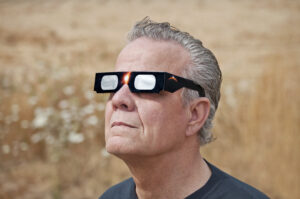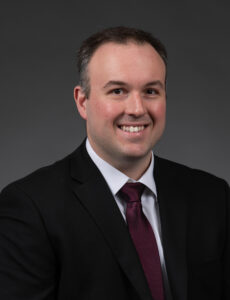Dr. Christopher Buzas: Plan Appropriately to Safely Experience the Solar Eclipse
With the upcoming solar eclipse on April 8, proper eye protection is paramount to ensuring a safe viewing experience and to get the most out of your day.
LECOM Health Ophthalmologist Christopher Buzas, D.O., of LECOM Health Eye Care Center, says wearing the proper eye protection is key to making sure your eyes are safe during the total experience. Read the article below, and then watch this edition of LECOM Health Matters, where Dr. Buzas shares more information on essential safety tips.
How can you view the solar eclipse safely?
 Regular sunglasses or even very dark sunglasses aren’t enough to keep your eyes safe for this eclipse coming to Erie, Pa.
Regular sunglasses or even very dark sunglasses aren’t enough to keep your eyes safe for this eclipse coming to Erie, Pa.
You need proper NASA-approved solar filters to allow for proper eye protection and to not damage the deeper parts of your eye. Even looking at your cellphones, cameras, binoculars, telescopes, any of those types of things, without the proper filters can lead to irreversible damage.
If you look at the sun for even just a few seconds too long, it can lead to damage to the retina, a condition called solar retinopathy.
Even though we try to give these warnings in advance of these kinds of events, I’ve seen this in my practice before, unfortunately.
Once the sun has caused the damage to the back of the eye, there’s no way to return the vision.
Wearing the solar filters is absolutely important to protect your eyes for the entire day.
What tips can you follow to protect your eyes from sun damage?
The biggest tip I can give to anyone getting ready to watch the solar eclipse is to plan appropriately.
Having the proper solar filters in place, purchased in advance or obtained from a local provider who is giving out the free NASA-approved solar filters, will give you the best chance of not being left in the dark, so to speak, when the eclipse comes.
When do you need to wear the protective eyewear?
During the eclipse itself, the solar filters are necessary for the entire partial eclipse, which is from the minute the moon starts moving over the sun, and then on the back end of it, after the totality when the moon starts moving away from the sun.
There’s approximately a little over three minutes in our area where the moon is completely covering the sun. You do not need the filters for those couple of minutes, but on either side of that, which is upwards of an hour or more, the solar filters are necessary.
How soon can you expect to see effects of sun damage to your eyes if you don’t wear the proper NASA-approved solar filters?
The timing of the damage to the back of the eye is variable, but for most people, if you don’t wear the proper eye protection and you do look at the sun – either during the eclipse, or any time, for that matter – the damage can occur anywhere from two to 14 days after the event.
Some people can notice it right away, other people notice it several days down the road when they’re trying to read something that’s small. If they’re watching TV, they might see a blind spot smack dab in the center of their vision.
That’s when you should be concerned. If you notice one of these signs after the event, make an appointment with your ophthalmologist right away.
Other than during a solar eclipse, when can the sun damage your eyes?
Proper eye protection is important for any outdoor activity – even simple activities like hiking and skiing.
Safety glasses or sunglasses decrease the risk of having a trauma to the eye.
Equally important here in Erie where we get plenty of snow, if you don’t wear eye protection for long-term sun exposure, you are at risk of getting Keratitis (inflammation of the cornea) from intense sun as a glare effect off the snow.


